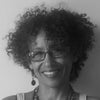
Back then I looked so much like my mother that people mistook pictures of her as a younger woman for pictures of me. Our bodies even moved the same way, swaying a little bit from side to side at a rhythm and pace that nearly had us colliding. I sometimes purposefully collided with her, in lieu of a hug, which would have embarrassed her. My mother couldn’t easily say “I love you,” but during these walks her body said it.
From The Art of Death by Edwidge Danticat
In her new book, The Art of Death, Edwidge Danticat comes back again and again to the panoply of feelings she has experienced since her mother’s death. Writing the Final Story is the subtitle of the book, and, as the above quote attests, writing about the dead often means writing—and thinking, and dreaming—about life. According to those who have suffered through it, losing one’s mom is the most difficile of all. After all, mothers are where we come from. Regardless of the ease or contentiousness of the relationship, the most heightened of feelings will ensue. But others say the worst death of all is that of one’s child—especially if they’re still young! How do you come to terms with losing one for whom you would give your own life? So, which is it? Mother, or child? From the beginning of time until now, the answer lies nowhere, the pain still within.
As the subtitle suggests, The Art of Death deliberates on approaches to writing about the final chapter—in this case, by exploring how a number of authors have executed the task. This is write up my alley! Any writer will tell you: through the act of writing, we come to understand how we feel about a thing. Even when we know what we know, only in the process of expressing it do we become aware of our own cognizance. For example, when writing fiction, we may have no idea what choice a character will make. But in the writing of her story, the character reveals her motivations and innermost fears, thereby leading us to her eventual decision. So writing about death—whether you’re a writer or not—becomes an important medium through which we can access and come to harmonize with the commotion inside.
It is said that all fears have fear-of-death at their root. We despise the unknown. Lack of control terrifies us. Which is why, after the death of a loved one, the bereaved often experiences inexplicable fear. Thanks to Danticat’s book, I came to realize that the fear I encountered after my good friend Nancy Moten died was not a weird and silly reaction, after all, but one that is common to most human beings. So, write about death, we should, if only to help ourselves and others brace for that which we refuse to anticipate.
Spirits and stories may not be able to save us, but we never stop trying to access them.
Edwidge Danticat
The Art of Death also explores different types of deaths and how some of our most cherished writers approached these beasts—suicides, sudden deaths, and those caused by drawn out illnesses, diseases, executions, natural disasters, wars, attacks, and even matricide. Toni Morrison is quoted on how she wrote the scene in Beloved, where a mother kills her own baby in order to spare her the torture of a life of slavery:
“It was very, very hard—not so much to find the language for it, that was difficult enough. It is just not authentic or legitimate enough for me to look at it from the outside… So if I’m going to imagine what it takes to kill your baby, then I have to put in my arms my baby…. And when that happens—and it’s difficult—then the language just pares down. You don’t get ornamental with that. You get very still, very clean-limbed, and very quiet, because the event itself is bigger than language.”
As we dig through life’s rubble to try and build our own personal belief system about death, we might do well to remember Robert Browning’s words [and Toni Morrison’s point of view]: less is more. Because sometimes, we die; and words to express that which we can never know may remain out of reach, but thankfully, we have books.
A friend of mine told me that her young dad’s death precipitated her spiritual awakening as she read book after book about death. That as she came to grips with his dying, she came to live a fuller life. How amazing! And personally, after ruminating on this book, I am comforted that, for various and sundry reasons, at the end of their lives many come to welcome death with open arms—meaning that, at some point, there’s a chance it stops being scary.
My heartfelt thanks go out to Edwidge Danticat, whose exploration of the human spirit through the wrenching experience of her mother’s passing has created another of her always-graceful books to enlighten us once more.
